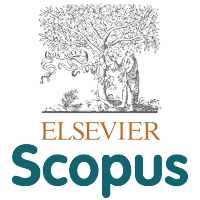Assessment of Structural Components in the Formation of Productivity of Different Lens culinaris Varieties Against the Background of the Use of Mineral Fertilizers
Abstract
Keywords
Full Text:
PDFReferences
Agrawal, S.K., Barpete, S., Kumar, J., Gupta, P. & Sarker, A. (2013). Global lentil production: Constraints and strategies. SATSA Mukhapatra - Annual Technical Issue, 17, 1–13. website
Ali, A., Ahmad, B., Hussain, I., Ali, A., & Shah, F. (2017). Effect of phosphorus and zinc on yield of lentil. Pure and Applied Biology, 6(4), 1397–1402. DOI
Cherenkova, E., & Zolotokrylin, A. (2016). On the comparability of some quantitative drought indices. Fundamental and Applied Climatology, 2, 79–94. DOI
Chernenok, V., Kurishbayev, A., Kudashev, A., & Nurmanov, E. (2017). Diagnostics and optimization of crops’ nitrogen nutrition in dryland conditions of northern Kazakhstan. Research on Crops, 18(3). DOI
Choukri, H., El Haddad, N., Aloui, K., Hejjaoui, K., El-Baouchi, A., Smouni, A., Thavarajah, D., Maalouf, F. and Kumar, S. (2022). Effect of high temperature stress during the reproductive stage on grain yield and nutritional quality of lentil (Lens culinaris Medikus). Frontiers in Nutrition, 9:857469. DOI
Crop Developmnet Centere. (2003). CDC VICEROY (Lens culinaris Medik.). Retrieved from website
Cui, Z., Yan, B., Gao, Y., Wu, B., Wang, Y., Xie, Y., Xu, P., Wang, H., Wen, M., Wang, Y. and Ma, X. (2022). Crop yield and water use efficiency in response to long-term diversified crop rotations. Frontiers in Plant Science, 13:1024898. DOI
Basbuga, S., Basbuga, S., Yayla, F., Mahmoud, A. M., & Can, C. (2021). Diversity of rhizobial and non-rhizobial bacteria nodulating wild ancestors of grain legume crop plants. International Microbiology, 24(2), 207–218. DOI
Das, T., Sen, A., & Mahapatra, S. (2023). Characterization of plant growth-promoting bacteria isolated from rhizosphere of lentil (Lens culinaris L.) grown in two different soil orders of eastern India. Brazilian Journal of Microbiology. DOI
Delahunty, A.J., Brand, J.D., & Nuttall, J.G. (2023). Field Screening of Lentil (Lens culinaris) for High-Temperature Tolerance. Agronomy, 13(7):1753. DOI
Dospekhov, B. (1985). Methodology of field experiments. Moscow: Agropromizdat.
Erofeeva, E.A. (2021). Plant hormesis and Shelford’s tolerance law curve. Journal of Forestry Research, 32, 1789–1802. DOI
GOST 17.4.4.02-84. (2008). Nature conservation. Soil. Methods of sampling and preparation of samples for chemical, bacteriological, helminthological analysis. Approved and put into effect by Resolution No. 4731 of the USSR State Committee on Standards dated December 19, 1984. Reiss.
GOST 26205-91. (1991). The state standard of the USSR. Soil. Determination of mobile phosphorus and potassium compounds by the Machigin method in the modification of CRIAS. Approved and put into effect by Resolution No. 2389 of the USSR State Committee for Standardization and M. Retrieved from website
GOST 26213-91. (1991). The state standard of the USSR. Soil. Methods for the determination of organic matter. Approved and put into effect by Resolution No. 2389 of the USSR State Committee for Standardization and Metrology dated 29.12.91. Retrieved from. Retrieved from website
GOST 26428-85. (1985). The state standard of the USSR. Soil. Methods for the determination of calcium and magnesium in an aqueous extract. Approved and put into effect by Resolution No. 283 of the USSR State Committee on Standards dated February 8, 1985. Retrieved from website
GOST 26483-85. (1994). The state standard of the USSR. Soil. Preparation of salt extract and determination of its pH by the CRIAS method. Approved and put into effect by Resolution No. 820 of the USSR State Committee on Standards dated March 26, 1985. The validity limit was lif. Retrieved from website
GOST 26951-86. (1992). The state standard of the USSR. Soil. Determination of nitrates by ionometric method. Approved and put into effect by Resolution No. 1950 of the USSR State Committee on Standards dated June 20, 86. The limitation of the validity period was removed by the .
GOST 28268-89. (2005). Interstate standard. Soil. Methods for determining humidity, maximum hygroscopic humidity and humidity of stable wilting of plants. Approved and put into effect by Resolution No. 2924 of the USSR State Committee on Standards dated 29.09.89. Reissue. Retrieved from website
Kaale, L.D., Siddiq, M., & Hooper, S. (2023). Lentil (Lens culinaris Medik) as nutrient‐rich and versatile food legume: A review. Legume Science, 5(2), e169. DOI
Katoch, R., & Tripathi, A. (2021). Research advances and prospects of legume lectins. Journal of Biosciences, 46(4), 104. DOI
Kotsiou, K., Palassaros, G., Matsakidou, A., Mouzakitis, C. K., Biliaderis, C. G., & Lazaridou, A. (2023). Roasted-sprouted lentil flour as a novel ingredient for wheat flour substitution in breads: Impact on dough properties and quality attributes. Food Hydrocolloids, 145, 109164. DOI
Kumar, S., Sharma, S. K., Dhaka, A. K., Bedwal, S., Sheoran, S., Meena, R. S., Jangir, C. K., Kumar, D., Kumar, R., Jat, R. D., Meena, A. K., Gaber, A., & Hossain, A. (2023). Efficient nutrient management for enhancing crop productivity, quality and nutrient dynamics in lentil (Lens culinaris Medik.) in the semi-arid region of northern India. PLOS ONE, 18(2), e0280636. DOI
Kumar, S., Sharma, S. K., Thakral, S. K., Bhardwaj, K. K., Jhariya, M. K., Meena, R. S., Jangir, C. K., Bedwal, S., Jat, R. D., Gaber, A., Atta, A. A., & Hossain, A. (2022). Integrated Nutrient Management Improves the Productivity and Nutrient Use Efficiency of Lens culinaris Medik. Sustainability, 14(3), 1284. DOI
Kurishbayev, A. K., Chernenok, V. G., Nurmanov, Y. T., Persikova, T. F., Zhanzakov, B. Zh., Kuzdanova, R. Sh., & Serikpaeva, Z. K. (2020). Meaningful management of soil fertility and flax productivity. Arabian Journal of Geosciences, 13(16), 787. DOI
Kusainova, A. A., Mezentseva, O. V., & Tusupbekov, Z. A. (2020). Influence of precipitation variability and temperature conditions on the yield of grain crops in Northern Kazakhstan. IOP Conference Series: Earth and Environmental Science, 548(4), 042026. DOI
Kuzbakova, M. M., Khasanova, G. Z., Jataev, S. A., Shergina, I. P., & Ten, E. A. (2022). The study of collectible varieties of lentils in the conditions of Northern Kazakhstan. Vestnik of the Kazakh Agrotechnical University named after S.Seifullin, 1(112), 11–20.
Li, H., Zhang, Y., Zhang, Q., Ahmad, N., Liu, P., Wang, R., Li, J., & Wang, X. (2021). Converting continuous cropping to rotation including subsoiling improves crop yield and prevents soil water deficit: A 12-yr in-situ study in the Loess Plateau, China. Agricultural Water Management, 256, 107062. DOI
Louarn, G., Bedoussac, L., Gaudio, N., Journet, E. P., Moreau, D., Jensen, E. S., & Justes, E. (2021). Plant nitrogen nutrition status in intercrops–a review of concepts and methods. European Journal of Agronomy, 124, 12622. DOI
Majorova, M. M., Levushkina, T. V., Ryabuhina, T. I., & Podshivalov, F. A. (1992). Vekhovskaya variety (Lens culinaris Medik.). Federal State Budgetary Institution "State Commission of the Russian Federation for Testing and Protection of Selection Achievements". website
Marakaeva, T. V. (2019). Relation between the crop yield and productivity elements of lentil. Bulletin of NSAU (Novosibirsk State Agrarian University), 3, 40–47. DOI
Narimanly, U. (2022). Changes in the structural elements of common lentils (Lens culinaris Medic.) in the gene pool of lentils depending on the fertilizer. Problems of Science, 6 (74), 26–29. website
Oshergina, I. P., & Ten, E. A. (2020). Evaluation of promising varieties and lines of lentils in the conditions of Northern Kazakhstan. Breeding and Seed Production, 4(94), 58–62. DOI
Pandey, M. K., Verma, A., & Kumar, P. (2016). Effect of integrated phosphorus management on growth, yield and quality of lentil (Lens culinaris). Indian Journal of Agricultural Research, 50(3), 238–243. DOI
Saikenova, A. Z., Kudaibergenov, M. S., Nurgassenov, T. N., Saikenov, B. R., & Didorenko, S. V. (2021). Crop Yield and Quality of Lentil Varieties in the Conditions of the Southeast of Kazakhstan. OnLine Journal of Biological Sciences, 21(1), 33–40. DOI
Sehgal, A., Sita, K., Rehman, A., Farooq, M., Kumar, S., Yadav, R., Nayyar, H., Singh, S., & Siddique, K. H. M. (2021). Lentil. In Crop Physiology Case Histories for Major Crops (pp. 408–428). Elsevier. DOI
Sharma, S., Sharma, N., Gupta, N., Angmo, P., Siddiqui, M.H., & Rahman, M.A. (2023). Impact of Chemically Diverse Organic Residue Amendment on Soil Enzymatic Activities in a Sandy Loam Soil. Agronomy, 13(7):1719. DOI
Singh, A. K., Mishra, B. K., Pandurangam, V., & Srivastava, J. P. (2022). Growth, Physiology, Yield, and Yield Attributes of Lentil (Lens culinaris Medikus) with Reference to Abiotic Stresses. In Response of Field Crops to Abiotic Stress (pp. 227–240). CRC Press.
Singh, N., Singh, G., Aggarwal, N., & Khanna, V. (2018). Yield enhancement and phosphorus economy in lentil (Lens culinaris Medikus) with integrated use of phosphorus, Rhizobium and plant growth promoting rhizobacteria. Journal of Plant Nutrition, 41(6), 737–748. DOI
Sinkovič, L., Pipan, B., Šibul, F., Nemeš, I., Tepić Horecki, A., & Meglič, V. (2023). Nutrients, Phytic Acid and Bioactive Compounds in Marketable Pulses. Plants, 12(1):170. DOI
Sulejmenov, R. M., Kaskarbaev, Z. A., Checherina, A. N., & Chilimova, I. V. (2016). Krapinka variety (Lens culinaris Medik.). Retrieved from website
Suvorova, G. N., Guryev, G. P., & Ikonnikov, A. V. (2021). The influence of the weather conditions of the year and rhizobia inoculation on the formation of lentil yields and indicators of its structure. Agriculture (Zemledelie), 4, 3–6. DOI
Tang, J., & Riley, W. J. (2021). Finding Liebig’s law of the minimum. Ecological Applications, 31(8), e02458. DOI
Yasmeen, S., Wahab, A., Saleem, M. H., Ali, B., Qureshi, K. A., & Jaremko, M. (2022). Melatonin as a Foliar Application and Adaptation in Lentil (Lens culinaris Medik.) Crops under Drought Stress. Sustainability, 14(24), 16345. DOI
DOI: http://doi.org/10.17503/agrivita.v45i3.4106
Copyright (c) 2023 The Author(s)

This work is licensed under a Creative Commons Attribution-NonCommercial 4.0 International License.








